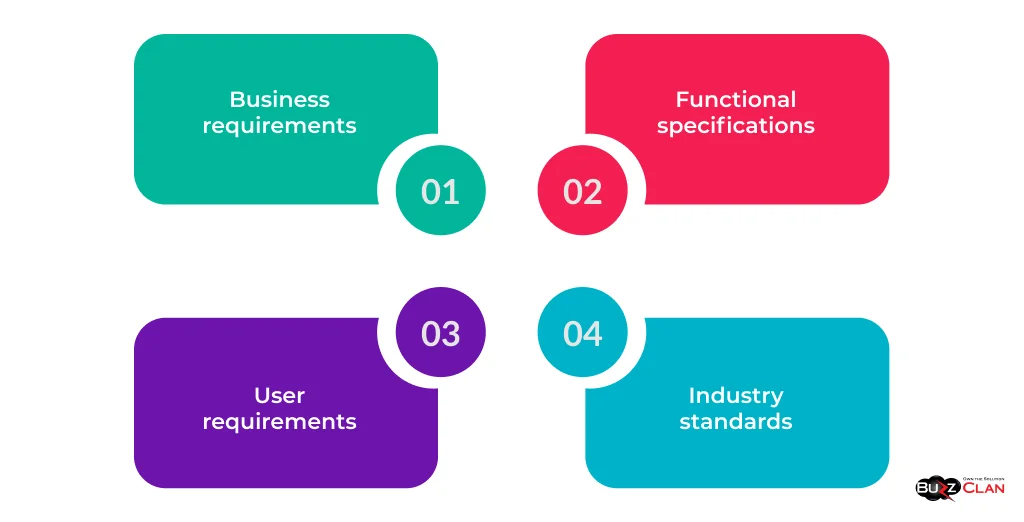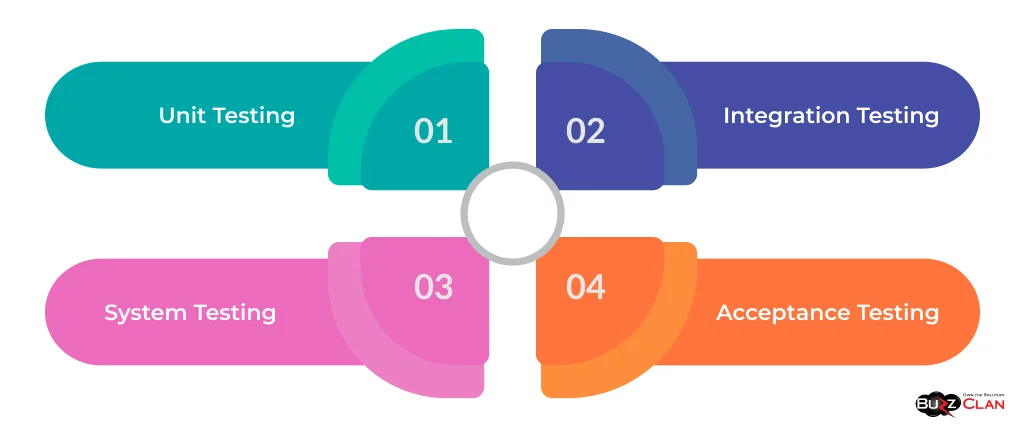Mastering Software Functional Testing: Types, Processes, and Best Practices
Devesh Rawat
Mar 28, 2024
Introduction
In software development, ensuring that a product functions as intended is paramount. This is where software functional testing comes into play. Functional testing is a type of software testing that verifies a software system against the functional requirements/specifications. Functional tests test each software application function by providing appropriate input and verifying the output against the functional requirements.
Functional testing is a critical component in the software development lifecycle. It ensures that the software system meets the functional requirements, works as expected, and has no major issues that could impact the user experience. This comprehensive guide will dive deep into functional testing, exploring its types, processes, techniques, tools, and best practices.
Understanding Functional Testing in Software Testing
At its core, functional testing is a quality assurance (QA) process and a type of black-box testing that bases its test cases on the specifications of the software component under test. Functions are tested by feeding them input and examining the output; internal program structure is rarely considered.
Functional testing focuses on the following:

- Business requirements,
- User requirements,
- Functional specifications,
- Industry standards.
The main objective of functional testing is not to find defects but to verify that the software functions per the requirements. However, if defects are found during functional testing, they are reported and fixed.
Functional vs. Non-Functional Testing
While functional testing verifies that the software does what it should, non-functional testing checks how well it works. Non-functional testing concerns the software’s performance, usability, scalability, and security.
Though they test different aspects, functional and non-functional testing complement each other. A software application must pass both to be considered high quality and ready for deployment.
The Scope of Functional Testing in Software Engineering
Types of Functional Testing

- Unit Testing: Conducted by developers to test individual units or components of the software to validate that each unit of the software performs as designed.
- Integration Testing: Individual units are combined and tested as a group to expose faults in the interaction between integrated units.
- System Testing: Conducted on a complete, integrated system to evaluate the system’s compliance with its specified requirements.
- Acceptance Testing: Formal testing concerning user needs, requirements, and business processes is conducted to determine whether a system satisfies the acceptance criteria.
Functional Testing in Agile and DevOps
In Agile development, functional testing is an integral part of the development process rather than a separate phase. Testing is performed concurrently with development, focusing on iterative and incremental testing.
In DevOps, functional testing is part of the Continuous Testing approach. Automated functional tests are integrated into the CI/CD pipeline, providing rapid feedback on the quality of the software changes.
Further Reading
The Process of Functional Testing
Planning and Designing Functional Tests
The first step in functional testing is to understand the functional requirements of the software. These requirements form the basis for creating a functional test plan and test cases.
A functional test plan typically includes the following:
- Scope of testing
- Test objectives
- Functional requirements to be tested
- Testing approach
- Test deliverables.
Functional test cases are designed based on the functional requirements. Each test case should have a specific objective, input data, execution steps, and expected output.
Executing Functional Tests
Functional tests can be executed manually or using automation tools. A human tester performs manual testing, carefully executes the test steps, compares the actual and expected results, and reports any discrepancies.
Automated functional testing uses software tools to execute pre-scripted tests and compare the actual and expected results. Automation is used for repetitive tests and tests that are difficult to perform manually.
Black Box Testing Techniques and Approaches
Black box testing is a software testing method that examines a system’s functionality without knowledge of its internal implementation. It is based on treating the system as a “black box,” where the tester focuses on the system’s inputs and outputs without considering how it works internally.
Black box testing techniques are designed to test the system’s behavior from the user’s perspective, ensuring that it meets the specified requirements and performs as expected. These techniques involve providing inputs to the system and observing the corresponding outputs to identify discrepancies or defects.
Here are some common black box testing techniques:
- Equivalence Partitioning: This technique divides the input domain into equivalence classes based on common characteristics. Test cases are then designed to cover each equivalence class, ensuring the system behaves correctly for all valid inputs.
- Boundary Value Analysis: This technique tests the system’s behavior at the boundaries of input domains, such as minimum, maximum, and invalid values. Test cases check whether the system handles these boundary values correctly and produces appropriate error messages when necessary.
- Decision Table Testing: This technique uses a decision table to represent the various conditions and actions of the system. Test cases are generated based on the combinations of conditions and actions, ensuring that all possible scenarios are covered.
- State Transition Testing: This technique is used for systems that undergo state changes, such as finite state machines. It involves creating a state transition diagram, designing test cases to transition the system through different states, and verifying the correct behavior in each state.
- Use Case Testing: This technique is based on the system’s use cases describing user and system interactions. Test cases are created to cover the different scenarios and user actions outlined in the use cases, ensuring that the system meets the user’s needs and expectations.
Model-based testing (MBT) is a software testing technique that uses models to derive test cases. The models used in MBT are typically formal representations of the system’s behavior, such as state machines or Petri nets. MBT can test various systems, including web applications, mobile applications, and embedded systems.
MBT has several benefits, including:
- Reduced test development time and effort: MBT can automate the generation of test cases, saving a significant amount of time and effort.
- Improved test coverage: MBT can help ensure the test cases cover the system’s requirements.
- Increased test effectiveness: MBT-generated test cases often find defects more than manually-created ones.
- Improved traceability: MBT can help improve the traceability of the system’s requirements and test cases.
MBT is a powerful technique that can improve the quality and efficiency of software testing. However, it is important to note that MBT is not a silver bullet. Several challenges are associated with MBT, including
- Model construction: The construction of the models used in MBT can be time-consuming and error-prone.
- Model validation: It is important to validate the models used in MBT to ensure that they accurately represent the system’s behavior.
- Test case generation: Generating test cases from the models used in MBT can be a complex process.
- Test execution: Executing MBT-generated test cases can be time-consuming and resource-intensive.
Despite these challenges, MBT can be a valuable tool for software testers. By using MBT, testers can improve the quality and efficiency of their testing efforts.
Functional Testing Tools and Software
Tool Selection
Selecting the right functional testing tools depends on various factors:
- The technology stack of the application under test
- The skills of the testing team
- The complexity of the application
- The budget available
Some key features in functional testing tools include test case management, test execution, result reporting, and integration with other tools in the development pipeline.
Automated Functional Testing Software
Automation has revolutionized functional testing, particularly in Agile and DevOps environments, emphasizing rapid and iterative development. Automated functional testing tools play a pivotal role in ensuring the quality of software applications by performing repetitive and time-consuming tasks with precision and speed.
Here are some popular automated functional testing tools and their key features:

Selenium:
- Open-source and cross-platform tool for automating web applications.
- Supports various programming languages like Java, Python, C#, and Ruby.
- Allows for the creation of robust and reliable test scripts.
- Offers a rich set of APIs for interacting with web elements.
- Extensive community support and a wealth of resources are available.
HP UFT (formerly QTP):
- A commercial tool for functional testing of software applications.
- Provides a user-friendly interface with drag-and-drop functionality.
- Supports various technologies, including web, mobile, and desktop applications.
- Offers advanced features such as data-driven testing, keyword-driven testing, and object recognition.
- Robust reporting and analytics capabilities.
Tricentis Tosca:
- A continuous testing platform for DevOps environments.
- Integrates with popular DevOps tools and CI/CD pipelines.
- Offers a model-based testing approach that simplifies test creation and maintenance.
- Provides advanced features such as risk-based testing, self-healing tests, and AI-powered analytics.
Seamless integration with Tricentis qTest for test management and reporting.
IBM Rational Functional Tester:
- An automated functional testing tool for web, desktop, and mobile applications.
- Offers a graphical user interface for creating and executing test scripts.
- Supports various programming languages, including Java, C++, and Visual Basic.
- It provides features such as recording and playback and data-driven and keyword-driven testing.
- Integrates with IBM Rational Quality Manager for test management and reporting.
Functional Testing Best Practices
To ensure effective functional testing, adhere to the following best practices:
- Develop comprehensive test cases that cover all functional requirements and user scenarios.
- Prioritize test cases based on risk and impact to ensure critical functionalities are thoroughly tested.
- Maintain clear and concise documentation of test cases, test data, and expected results.
- Involve the QA team early in the development process to identify and address issues proactively.
- Establish a robust defect tracking and reporting system to ensure issues are promptly addressed and retested.
- Regularly update and maintain test cases to align with changing requirements and product updates.
- Automate repetitive and time-consuming test cases to improve efficiency and reduce manual effort.
- Foster collaboration between development and QA teams to ensure a shared understanding of requirements and testing objectives.
By following these best practices, organizations can enhance the effectiveness of their functional testing efforts, leading to higher-quality software and improved customer satisfaction.
Crafting a Functional Test Plan
A solid functional test plan is crucial for the success of functional testing. The plan should be comprehensive and clearly define the scope, objectives, approach, and deliverables of testing.
Best practices for creating a functional test plan include:
- Involve all stakeholders in the planning process
- Prioritize requirements based on risk and criticality
- Define clear and measurable test objectives
- Choose the right testing techniques and tools
- Plan for test environment setup and data preparation
Building a Functional Testing Checklist
A functional testing checklist covers all key aspects of functional testing. The checklist may include items such as:
- Test cases cover all critical functional requirements
- Each test case has a specific objective and expected result
- Test cases are prioritized based on risk and criticality
- Test data is prepared for each test case
- Test environment is set up and ready for testing
- Test results are properly documented and reported
Challenges and Solutions in Functional Testing
Functional testing often presents challenges that can hinder its effectiveness. Some common challenges include:
- Incomplete or ambiguous functional requirements
- Time and budget constraints
- The complexity of the application under test
- Lack of skilled testers
- Inadequate test coverage
When faced with challenges in functional testing, organizations can employ the following solutions to enhance their testing processes:
- Collaborative Requirements Gathering: Encourage close collaboration between development, QA, and business stakeholders to ensure that functional requirements are clear, complete, and testable. Use workshops, prototyping, and user stories to facilitate effective communication and alignment.
- Risk-Based Testing: Prioritize testing efforts based on the risk and impact of each functionality. When time and resources are limited, focus on testing critical and high-risk areas, ensuring the software’s most important aspects are thoroughly validated.
- Test Design Techniques: Employ test design techniques like boundary value analysis, equivalence partitioning, and decision tables to create efficient and effective test cases that cover a wide range of scenarios with minimal redundancy.
- Agile Testing: Adopt an agile testing approach emphasizing continuous testing, collaboration, and adaptation. Integrate testing activities into each iteration, allowing for early and frequent feedback, and adjust testing efforts based on changing requirements and priorities.
- Test Automation: Leverage test automation tools and frameworks to automate repetitive and time-consuming test cases. This allows faster and more consistent test execution, reduces manual effort, and enables more efficient regression testing as the software evolves.
- Continuous Improvement: Regularly assess and optimize functional testing processes based on metrics, feedback, and lessons learned. Identify areas for improvement, implement changes, and measure the impact to ensure ongoing enhancement of testing effectiveness and efficiency.
By implementing these solutions, organizations can overcome the challenges associated with functional testing and establish a robust and reliable testing process that contributes to delivering high-quality software products.
Quality Assurance through Functional Testing
Functional testing is a key aspect of quality assurance. It ensures that the software meets the functional requirements and works as expected from a user’s perspective.
However, more than functional testing is needed to ensure software quality. It should be complemented with other types of testing, such as performance, security, and usability, to evaluate the software’s quality comprehensively.
The Role of Functional Testing in Software Development
Functional testing plays a crucial role in the software development lifecycle:
- Verification: Functional testing verifies that the software meets the specified functional requirements, ensuring it performs as intended.
- Defect Detection: By executing test cases and scenarios, functional testing helps identify defects and issues early in the development process, reducing the cost and effort required for fixes.
- User Acceptance: Functional testing validates that the software meets user expectations and business requirements, facilitating user acceptance and adoption.
- Risk Mitigation: By thoroughly testing the software’s functionality, organizations can mitigate the risk of releasing defective or unreliable software to end-users.
- Quality Assurance: Functional testing is a key component of the overall quality assurance process, contributing to delivering high-quality software products.
Integrating functional testing throughout the software development lifecycle, from requirements gathering to release, ensures that quality is built into the product, resulting in more reliable and satisfactory software.
Functional Testing in Different Development Stages
Functional testing plays a role in different stages of the software development lifecycle (SDLC):
- Requirements gathering and analysis: Functional requirements form the basis for functional test planning.
- Design: Functional test cases can be designed based on the software design.
- Development: Developers perform unit and integration testing.
- Testing: System and acceptance testing are performed by the QA team.
- Deployment: Functional testing is part of the user acceptance testing (UAT) before the software is deployed to production.
Integrating Functional Testing with Other Test Types
While functional testing verifies that the software does what it’s supposed to, other testing types evaluate different aspects of the software’s quality:
- Performance Testing: Checks the software’s speed, scalability, and stability under load.
- Security Testing: Assesses the software’s resilience against potential security threats.
- Usability Testing: Evaluates the software’s user interface and user experience.
Integrating functional testing with these other test types comprehensively assesses the software’s quality.
Conclusion
Software functional testing is a vital process that ensures a software system meets its functional requirements and works as expected from a user’s perspective. Software development teams can effectively plan and execute functional tests by understanding functional testing types, processes, techniques, and tools, leading to high-quality software that meets user needs.
As software development methodologies continue to evolve, with a growing emphasis on Agile and DevOps practices, the role of functional testing is also evolving. Continuous Testing, focusing on automated functional testing integrated into the CI/CD pipeline, is becoming increasingly important.
Software development teams should continuously improve their functional testing practices to stay ahead. This involves staying updated with the latest tools and techniques, following best practices, and integrating functional testing with other types of testing for a comprehensive quality assurance approach.
FAQs

Get In Touch
Follow Us

Get In Touch
Follow Us
Table of Contents
- Introduction
- Understanding Functional Testing in Software Testing
- Functional vs. Non-Functional Testing
- The Scope of Functional Testing in Software Engineering
- The Process of Functional Testing
- Black Box Testing Techniques and Approaches
- Functional Testing Tools and Software
- Functional Testing Best Practices
- Challenges and Solutions in Functional Testing
- Quality Assurance through Functional Testing
- The Role of Functional Testing in Software Development
- Conclusion
- FAQs
- Get In Touch








